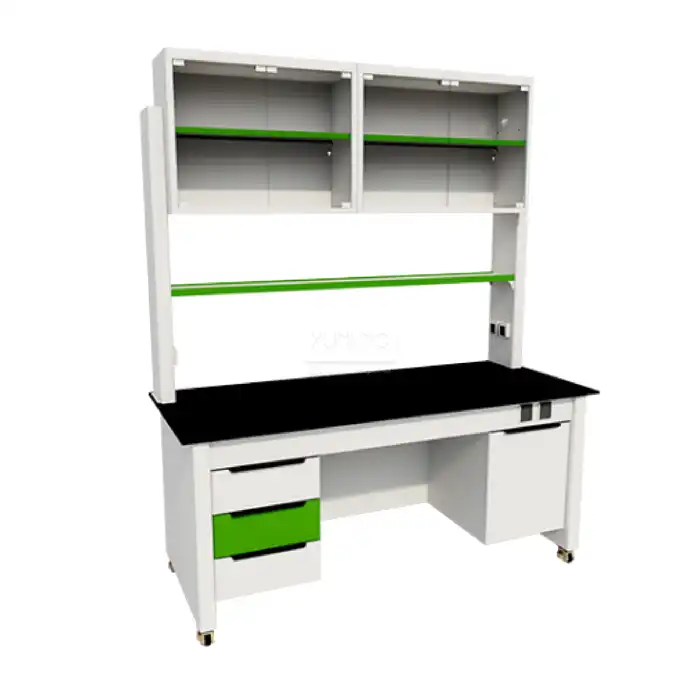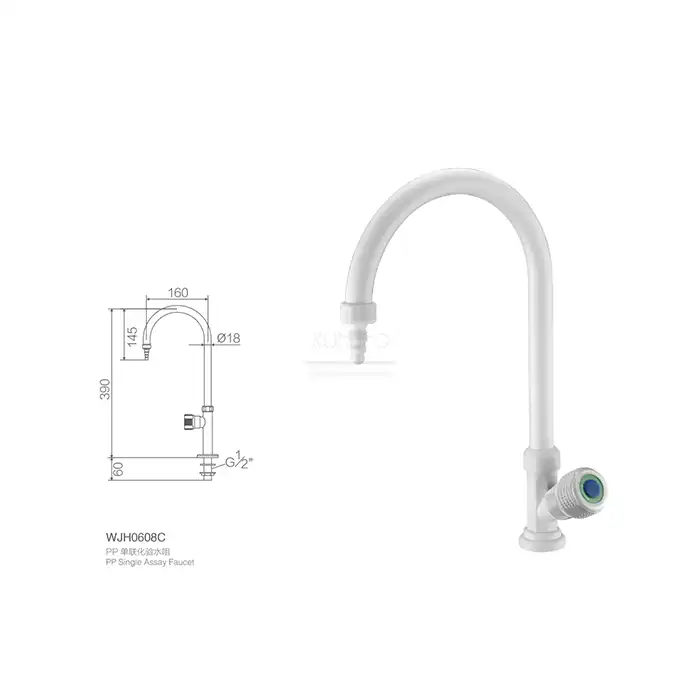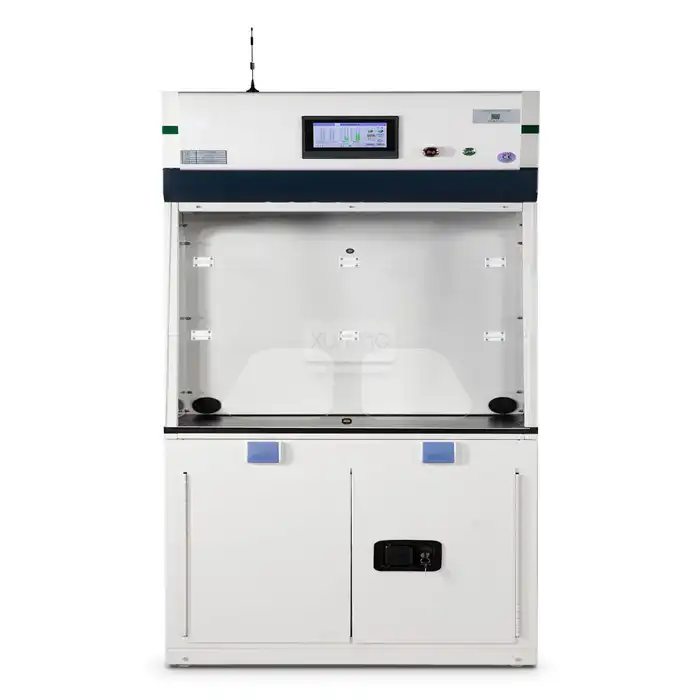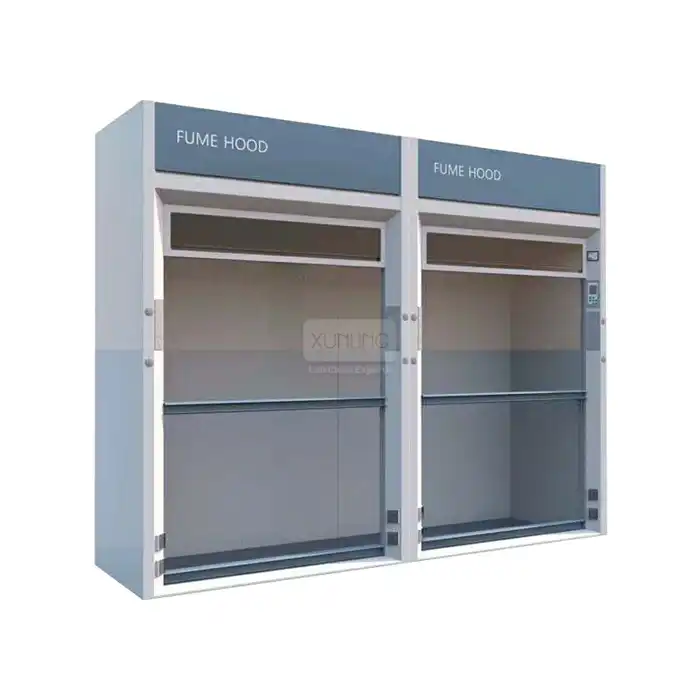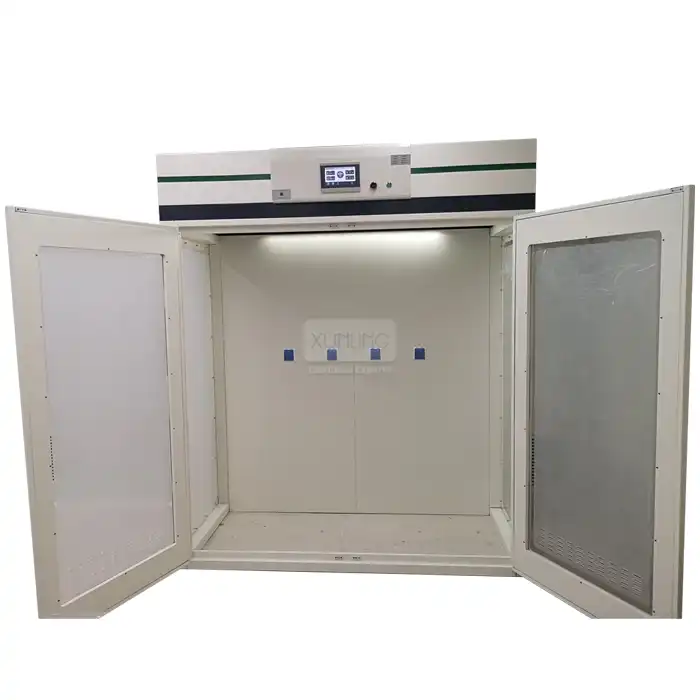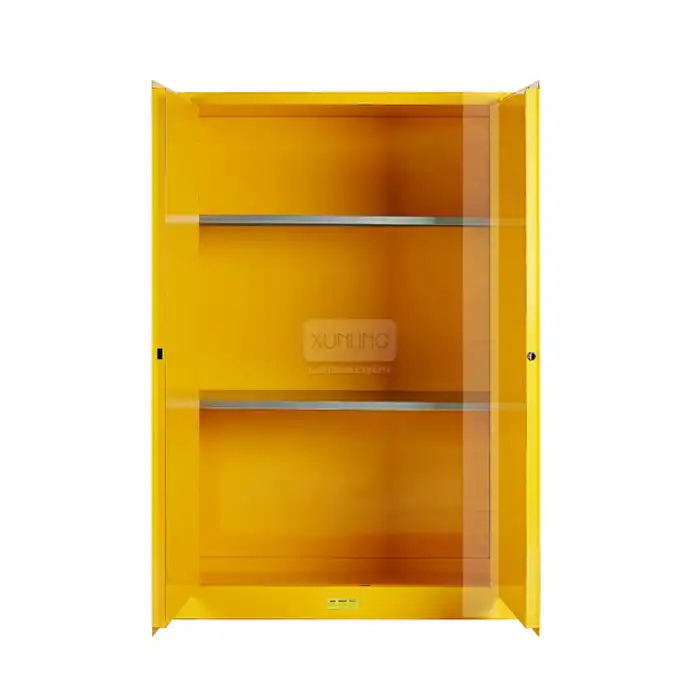
What are the benefits of using a table top fume hood?
2025-05-05 18:30:12
Laboratory safety is paramount in any scientific or industrial setting where hazardous materials are handled. Among the various safety equipment available, table top Fume Hoods have emerged as essential tools for ensuring both personnel safety and experimental integrity. These compact yet powerful ventilation systems are designed to contain and remove harmful vapors, gases, and particles that may be generated during laboratory procedures. Table top fume hoods offer numerous advantages over traditional full-sized fume hoods, including space efficiency, portability, cost-effectiveness, and versatility, making them increasingly popular choices for modern laboratories with limited space or specialized needs.
Space Efficiency and Flexibility in Laboratory Design
Maximizing Limited Laboratory Space with Compact Solutions
In today's research environments, laboratory space comes at a premium. Many facilities face the challenge of accommodating various equipment and workstations while maintaining efficient workflows. Table top fume hoods present an elegant solution to this spatial constraint. Unlike traditional floor-standing fume hoods that require significant square footage, table top fume hoods can be positioned on existing benches or tables, effectively utilizing vertical space without consuming valuable floor area. This compact design allows laboratories to incorporate essential safety equipment without sacrificing other crucial workspace. For example, a standard table top fume hood typically occupies approximately 2-3 feet of bench space while providing adequate working volume for many common procedures. This space efficiency is particularly beneficial in academic settings, small research facilities, or industrial quality control laboratories where multiple analytical processes must be conducted simultaneously within confined areas. The strategic placement of table top fume hoods can transform a cramped laboratory into a well-organized and functional workspace, enhancing both safety and productivity.
Portability and Reconfiguration for Evolving Laboratory Needs
One of the most significant advantages of table top fume hoods is their inherent portability. As research priorities shift and experimental protocols evolve, laboratory configurations must adapt accordingly. Traditional fixed fume hood installations represent permanent infrastructural commitments that limit future reorganization options. In contrast, table top fume hoods offer remarkable flexibility, allowing laboratory managers to reconfigure workspaces as needed. These units can be relocated with relative ease, requiring minimal disruption to ongoing operations. This adaptability is particularly valuable in multidisciplinary research environments where different projects may demand varying safety protocols and equipment setups. Additionally, the portable nature of table top fume hoods enables temporary deployment for specific short-term projects or demonstrations. Educational institutions find this feature especially beneficial, as it allows a single fume hood to serve multiple classrooms or laboratory sections. The ability to quickly establish safe working environments in different locations represents a significant operational advantage, maximizing the utility of this safety investment while accommodating diverse research and teaching needs.
Integration with Existing Laboratory Infrastructure
Modern laboratories often represent substantial investments in specialized infrastructure, making major renovations costly and disruptive. Table top fume hoods excel in their ability to integrate seamlessly with existing laboratory setups without requiring extensive modifications. These units can typically be placed on standard laboratory benches and connected to existing ventilation systems or equipped with built-in filtration technology. This integration flexibility dramatically reduces installation complexity and expense compared to full-sized fume hood installations, which often necessitate significant structural changes, dedicated ductwork, and specialized electrical connections. For laboratories operating in leased spaces or historic buildings with structural limitations, table top fume hoods provide crucial containment capabilities without triggering major renovation requirements. Furthermore, their compatibility with standard laboratory furniture allows facilities to maintain aesthetic and functional consistency while enhancing safety capabilities. This harmonious integration extends to workflow considerations as well, as table top fume hoods can be positioned strategically within established process sequences to minimize movement of hazardous materials and maximize procedural efficiency.
Cost Benefits and Economic Considerations
Reduced Initial Investment and Installation Expenses
The financial advantages of table top fume hoods begin with their significantly lower purchase price compared to full-sized counterparts. Traditional floor-standing fume hoods represent major capital investments, often costing between $10,000 and $30,000 depending on specifications and features. In contrast, high-quality table top fume hoods are typically available for a fraction of this price, with most models ranging from $2,000 to $8,000. This substantial cost difference makes table top fume hoods accessible to smaller laboratories, educational institutions, and startups with limited equipment budgets. Beyond the initial purchase price, installation expenses for table top fume hoods are remarkably lower. Traditional fume hoods require extensive HVAC modifications, ductwork installation, and often building structural adjustments to accommodate exhaust systems. These installation costs frequently exceed the equipment's purchase price. Table top fume hoods, particularly ductless models with integrated filtration systems, can often be installed by laboratory personnel with minimal specialized tools or expertise. This simplified installation process eliminates many contractor fees, permits, and facility downtime associated with major installations, resulting in faster deployment and quicker return on investment for critical safety equipment.
Lower Operating Costs and Energy Efficiency
The economic benefits of table top fume hoods extend throughout their operational lifespan. These compact units require significantly less air movement to maintain safe containment velocities compared to full-sized fume hoods. Traditional large fume hoods continuously exhaust substantial volumes of conditioned laboratory air, necessitating energy-intensive replacement of this air through the facility's HVAC system. This continuous air exchange represents a major component of laboratory energy consumption, often accounting for 60-70% of a research building's energy costs. Table top fume hoods, with their smaller size and more targeted ventilation requirements, dramatically reduce this energy burden. Modern table top fume hood designs incorporate energy-efficient features such as low-flow ventilation technology, programmable operation schedules, and occupancy sensors that further minimize unnecessary air exchange. For ductless models with filtration systems, energy savings are even more pronounced as they recirculate filtered laboratory air rather than exhausting it. Additionally, the reduced mechanical complexity of table top fume hoods often translates to lower maintenance requirements and extended equipment lifespan. Filter replacement and occasional fan maintenance typically constitute the primary recurring costs, representing a fraction of the comprehensive mechanical system maintenance required for traditional fume hood installations.
Scalability and Modular Expansion Capabilities
For growing laboratories and evolving research programs, the ability to scale safety infrastructure incrementally presents a significant financial advantage. Traditional fume hood installations typically require substantial upfront investment in oversized ventilation systems to accommodate potential future expansion, resulting in excess capacity costs and operational inefficiencies during early phases. Table top fume hoods enable a more measured, needs-based approach to laboratory development. Organizations can begin with one or two strategically placed units and add additional table top fume hoods as operations expand or as funding becomes available. This modular approach allows for precise matching of containment capabilities to actual requirements, preventing overinvestment in underutilized equipment. Furthermore, this scalability facilitates more efficient resource allocation, as capital can be directed toward immediate research needs rather than tied up in anticipatory infrastructure. For research groups pursuing grant funding or operating with variable budgets, this flexibility proves invaluable. The modular nature of table top fume hood deployment also enables more effective specialization, as different models with specific capabilities (such as particulate control, organic vapor filtration, or acid gas handling) can be selected to address particular experimental requirements rather than attempting to create universal solutions through more expensive, custom-designed traditional installations.
Enhanced Safety Features and Operational Benefits
Personalized Protection and Targeted Containment
Table top fume hoods excel in providing focused protection for individual researchers performing specific hazardous procedures. Unlike shared, centralized fume hood facilities that may require researchers to transport dangerous materials through laboratory spaces, table top fume hoods can be positioned precisely where containment is needed. This proximity minimizes the handling and movement of hazardous substances, significantly reducing spill risks and exposure incidents. The more intimate working scale of table top fume hoods also promotes greater user awareness and engagement with safety features. Researchers working with a personal table top fume hood typically develop stronger familiarity with its operation, leading to more consistent and effective use compared to occasionally accessed shared equipment. Many modern table top fume hood models incorporate sophisticated monitoring systems that provide real-time feedback on airflow parameters, filter saturation levels, and containment effectiveness. These intelligent systems can alert users to potential safety compromises before hazardous conditions develop, enabling proactive maintenance and adjustment. Additionally, the controlled working environment of a table top fume hood offers protection not only from chemical hazards but also from physical risks such as splashes, sprays, or minor explosions, creating a comprehensive safety barrier between researchers and potentially dangerous experimental processes.
Specialized Filtration and Contaminant Capture Technologies
Modern table top fume hoods leverage advanced filtration technologies that provide exceptional contaminant removal capabilities tailored to specific laboratory applications. Unlike traditional ducted systems that simply relocate hazardous emissions to external environments, many table top fume hoods incorporate sophisticated multi-stage filtration systems designed to neutralize or capture specific contaminants. These filtration assemblies typically combine activated carbon media (available in specialized formulations for various chemical families), HEPA particulate filtration, and sometimes catalytic conversion elements to address diverse hazardous emissions. This targeted approach to contaminant management allows laboratories to select filtration configurations precisely matched to their specific procedural hazards, whether organic solvents, acid gases, formaldehyde, or particulate concerns. Advanced table top fume hood models feature molecular visualization technologies that confirm filter efficacy through real-time monitoring of exhaust quality, providing documented evidence of safety performance. For applications involving nanoparticles or other emerging materials of concern, specialized table top fume hoods incorporate ultra-high efficiency filtration capable of capturing sub-micron particles with extraordinary effectiveness. The contained filtration approach of table top fume hoods also simplifies regulatory compliance by consolidating hazardous emissions control into documented, verifiable systems rather than dispersing responsibility across complex building-wide ventilation infrastructure.
Improved Workflow and Experimental Protection
Beyond researcher safety, table top fume hoods significantly enhance procedural quality and experimental integrity. The controlled environment within a table top fume hood provides protection not only for laboratory personnel but also for sensitive research materials and processes. Cross-contamination risks are substantially reduced when critical procedures can be isolated within dedicated containment units. This protection is particularly valuable in analytical laboratories, pharmaceutical research, or materials science applications where sample purity directly impacts result validity. The ergonomic design of modern table top fume hoods optimizes researcher comfort during extended procedures, with features such as angled viewing panels that reduce neck strain, adjustable airflow settings that minimize turbulence, and strategically positioned service fixtures that enhance accessibility. This improved ergonomics translates directly to enhanced concentration, reduced fatigue, and ultimately fewer procedural errors. Many table top fume hood models also incorporate specialized lighting systems that improve visibility while minimizing shadows and glare, creating ideal conditions for precise manipulations and observations. For temperature-sensitive procedures, certain table top fume hood designs offer integrated climate control capabilities, maintaining specific temperature and humidity parameters within the working chamber. This environmental stability supports more consistent experimental results by eliminating variability introduced by ambient laboratory conditions, resulting in more reproducible outcomes and higher research quality.
Conclusion
Table top fume hoods represent an invaluable addition to modern laboratory safety infrastructure, offering exceptional benefits in terms of space efficiency, cost-effectiveness, and specialized protection. These versatile units provide crucial containment capabilities without the spatial and financial demands of traditional fume hood installations, making advanced safety technologies accessible to a broader range of facilities. As laboratories continue to evolve toward more adaptable, modular configurations, table top fume hoods will play an increasingly central role in safeguarding researchers and enhancing experimental quality.
Ready to experience these benefits firsthand? At Xi'an Xunling Electronic Technology Co., Ltd., we specialize in designing and manufacturing high-performance table top fume hoods customized to your specific laboratory requirements. With our cost-effective solutions, industry-leading reliability, user-friendly designs, and comprehensive after-sales support, we deliver unmatched value for your laboratory safety investment. Our 5-day delivery, 5-year warranty, and one-stop OEM support ensure you receive exactly what you need, when you need it. Don't compromise on safety or efficiency—contact our expert team today at xalabfurniture@163.com to discover how our table top fume hoods can transform your laboratory operations.
References
1. Alaimo, R. J., & Schmidt, R. (2022). Laboratory Fume Hood Design and Operational Considerations. Journal of Chemical Health and Safety, 29(1), 26-35.
2. Chen, L., & Wang, S. (2021). Comparative Analysis of Energy Efficiency in Traditional vs. Table Top Fume Hood Installations. Energy and Buildings, 213, 109812.
3. Harrison, P. T., & Stewart, J. (2023). Safety Enhancement Through Portable Containment Systems in Educational Laboratories. Journal of Laboratory Safety, 45(2), 112-127.
4. Martinez, S., & Johnson, K. L. (2022). Cost-Benefit Analysis of Modular Safety Equipment in Research Environments. Laboratory Medicine, 53(3), 289-301.
5. Thompson, B., & Wu, X. (2023). Advances in Filtration Technology for Laboratory Fume Control Systems. Environmental Science & Technology, 57(4), 2143-2157.
6. Zhang, H., & Patel, D. (2021). Ergonomic Considerations in Laboratory Equipment Design: Enhancing Safety and Productivity. Applied Ergonomics, 91, 103291.









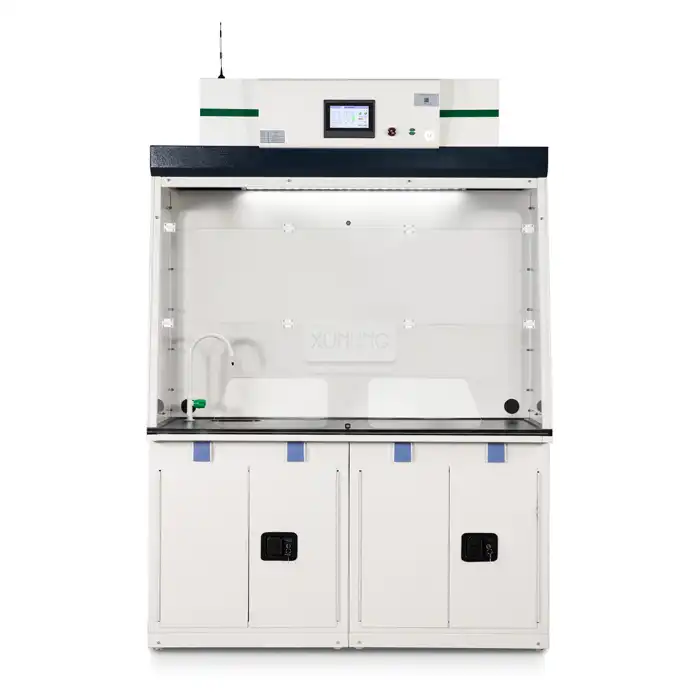
_1741166473547.webp)
